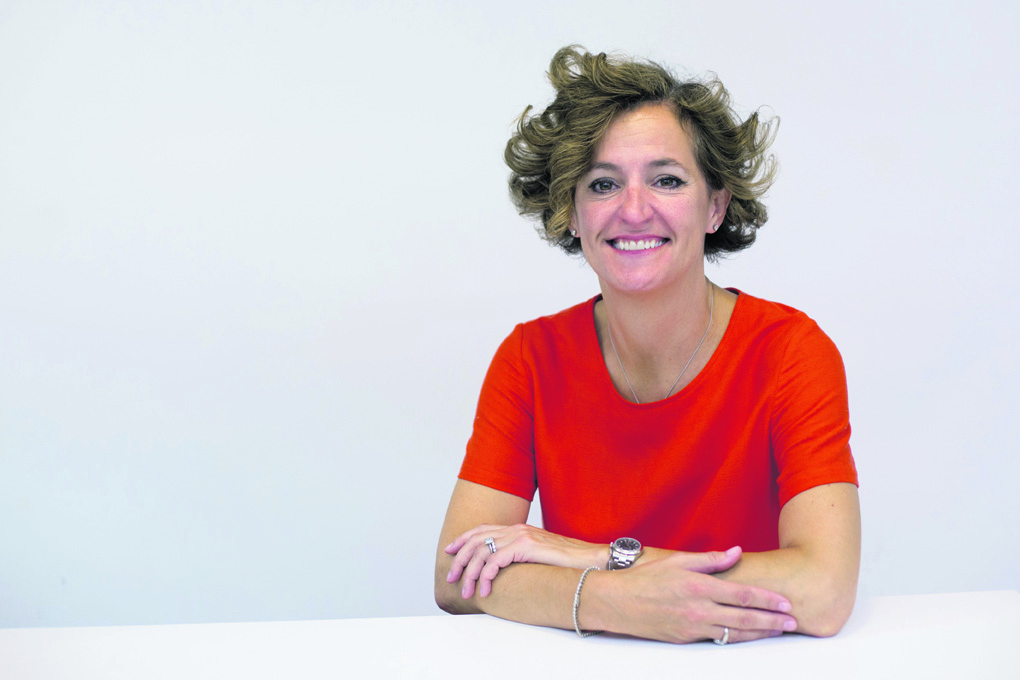The space to create: Ogilvy & Mather UK’s Annette King on New York and the South Bank

"If you have all the research, all the ground rules, all the directives, all the data – it doesn’t mean the ad is written. Then you’ve got to close the door and write something…” Few would question David Ogilvy’s contribution to advertising. But the idea of closed doors seems anathema to the creative process today – something which Annette King, chief executive of Ogilvy & Mather Group UK, is eager to advance.
Last week, after 24 years at Canary Wharf, Ogilvy & Mather UK’s 10 operating companies moved into Sea Containers House on the South Bank. “Employees can move around the building to work on a project or pitch, either within or across operating companies,” she says. “The main difference between the two locations is the creative inspiration. From the Tate Modern to the National Theatre, we’re right in the middle of this cultural mile.” She tells City A.M. why collaboration is key, and why New York gives you confidence.
Is it difficult for agency networks to be big and retain their creative edge?
Our size has never really been a problem. We just have a larger and more diverse pool of talent. We try to recruit “purple squirrels” – people who are talented and understand technology, but don’t necessarily fit into cookie-cutter job description – so blended teams and shared workspaces are really important. And this collaboration should extend to tech partners and others who can help make our product more powerful.
Back in 2009, I had just come back from a tour around Silicon Valley and Silicon Roundabout was just starting to garner press attention. So we organised a minibus tour around five startups, like TweetDeck and It’s Nice That. It was one of the best things we ever did. We’ve since worked with most of the firms we visited, and we learnt that, as technology comes and goes ever more rapidly, it is ever more important to focus on the partnerships we build. Some agencies try to do everything themselves, but that’s a mistake.
You spent four years in New York early in your career. What did you learn?
You build your confidence just from being there. Everything is five times bigger – the size of accounts, the number of people in the office – so you learn not to be overawed by scale. You also learn the art of giving and receiving feedback, mostly because you receive it every hour of the day. As a Brit, it’s hard to take at first, and even harder to give, but you embrace it once you realise that it’s going to help you.
Having gone from running an agency to being group head, is it hard not to meddle?
Oh yes, always! But I think it’s natural to focus away from the company you’ve been involved with. You make a point of it so that you can earn the trust of those that are less known to you. Having worked for OgilvyOne London for over a decade, I was eager to find out what would help our other companies to thrive. I’ve just spent the last four months running Ogilvy & Mather Advertising while we waited for our new chief executive to arrive. When you’re responsible for an operating company, they’re your numbers, your talent and your creative challenges. You don’t know how it ticks until you’re in charge.
Also, I had another role in between, which was as chief executive of OgilvyOne across 18 offices in the EMEA region. I realised that you have to get out of the mindset of doing whatever it takes to make your company succeed, and focus on helping 18 other chief executives to do that themselves. I’ve since been able to use that learning in my UK Group role.
What made you proudest in 2015?
I would have to say our contribution to winning Network of the Year at Cannes for a fourth year running. Our creative product has always been strong and 2015 was no different – from the campaign promoting awareness of female genital mutilation to our work for Battersea Dogs Home, for which we created micro-chipped leaflets to be handed out at shopping centres. As the leaflet holder walked past a digital poster, a dog would appear, following them round from billboard to billboard. Our executive creative directors are always striving to do things which haven’t been done before.